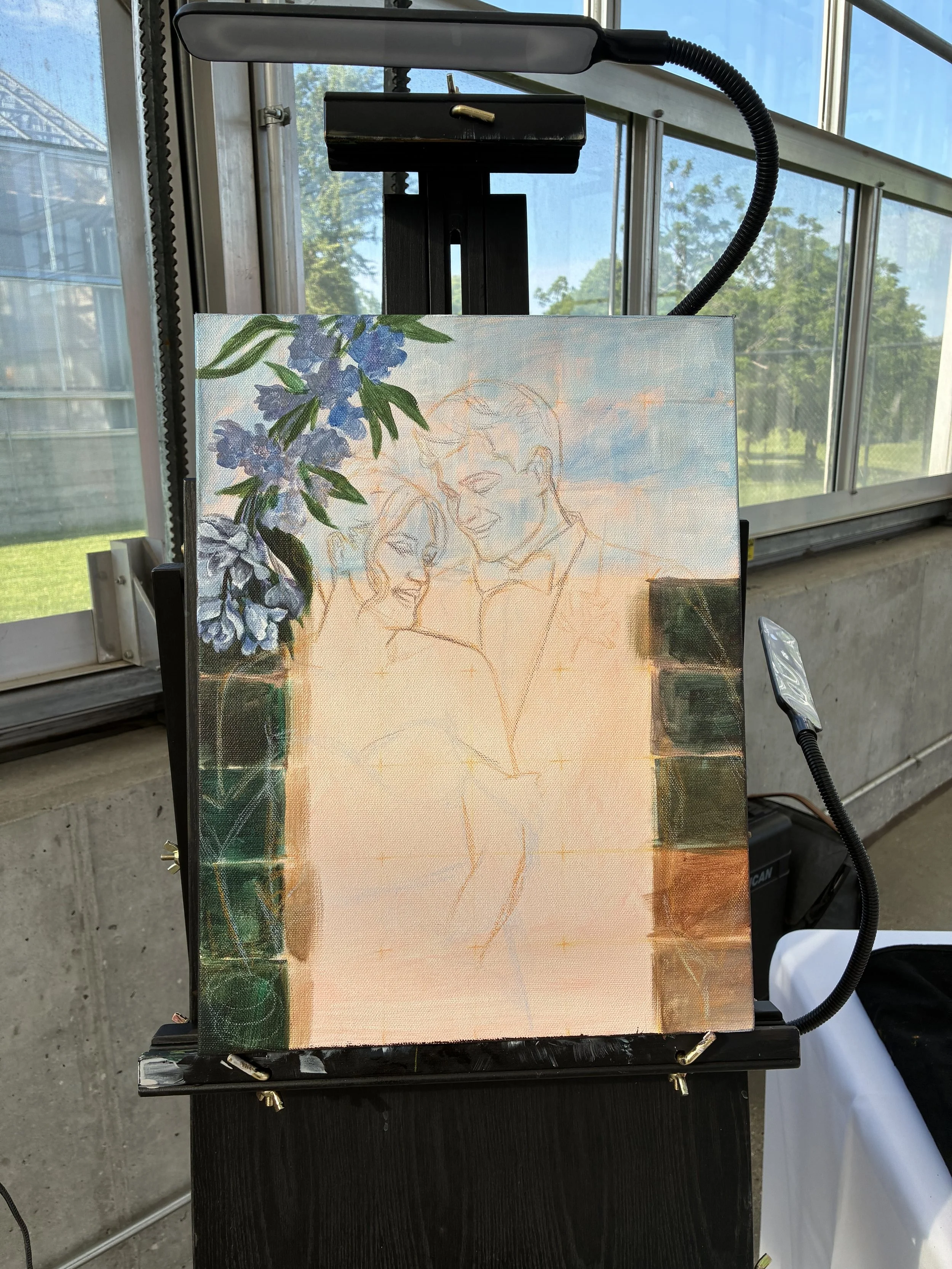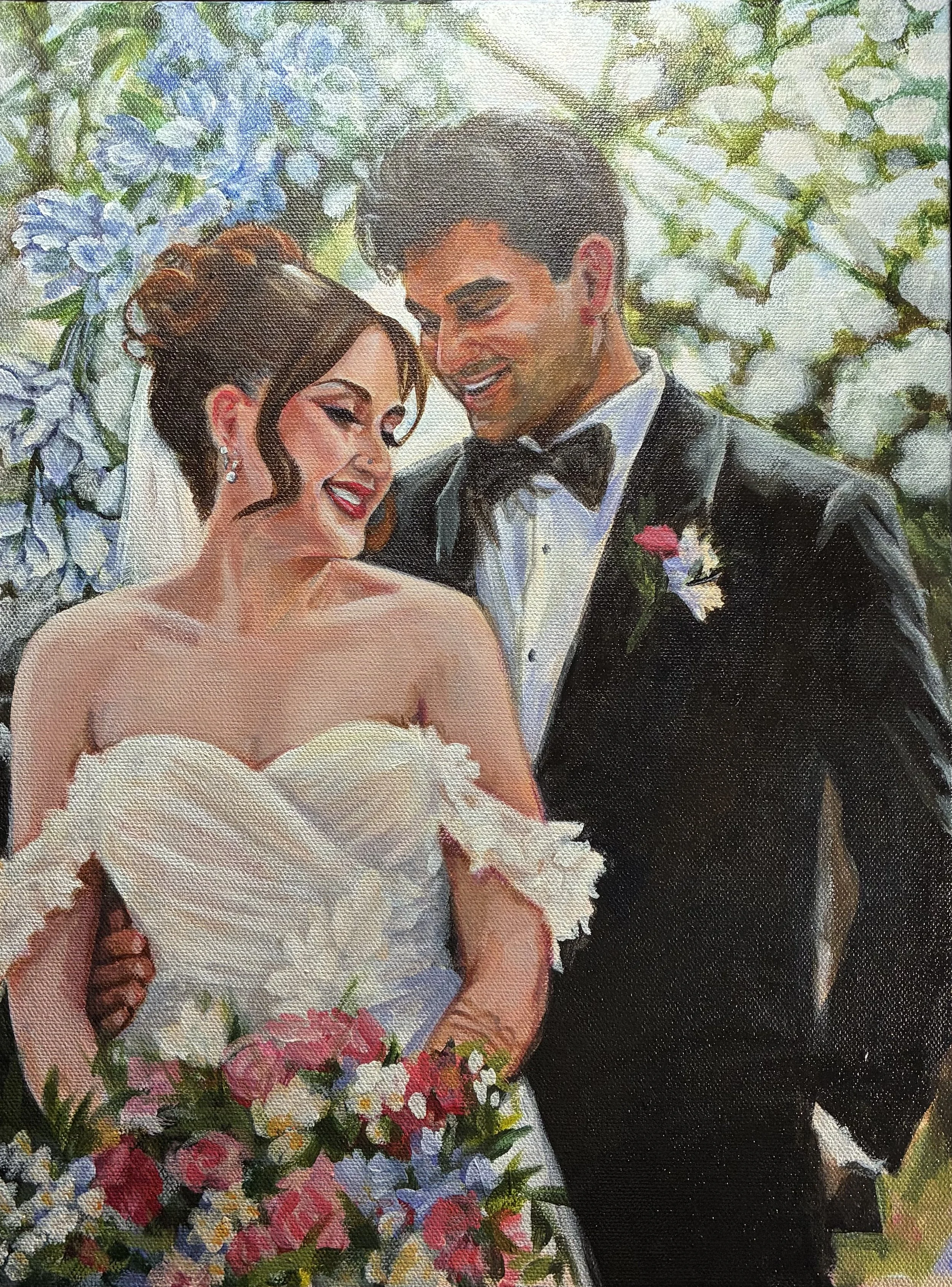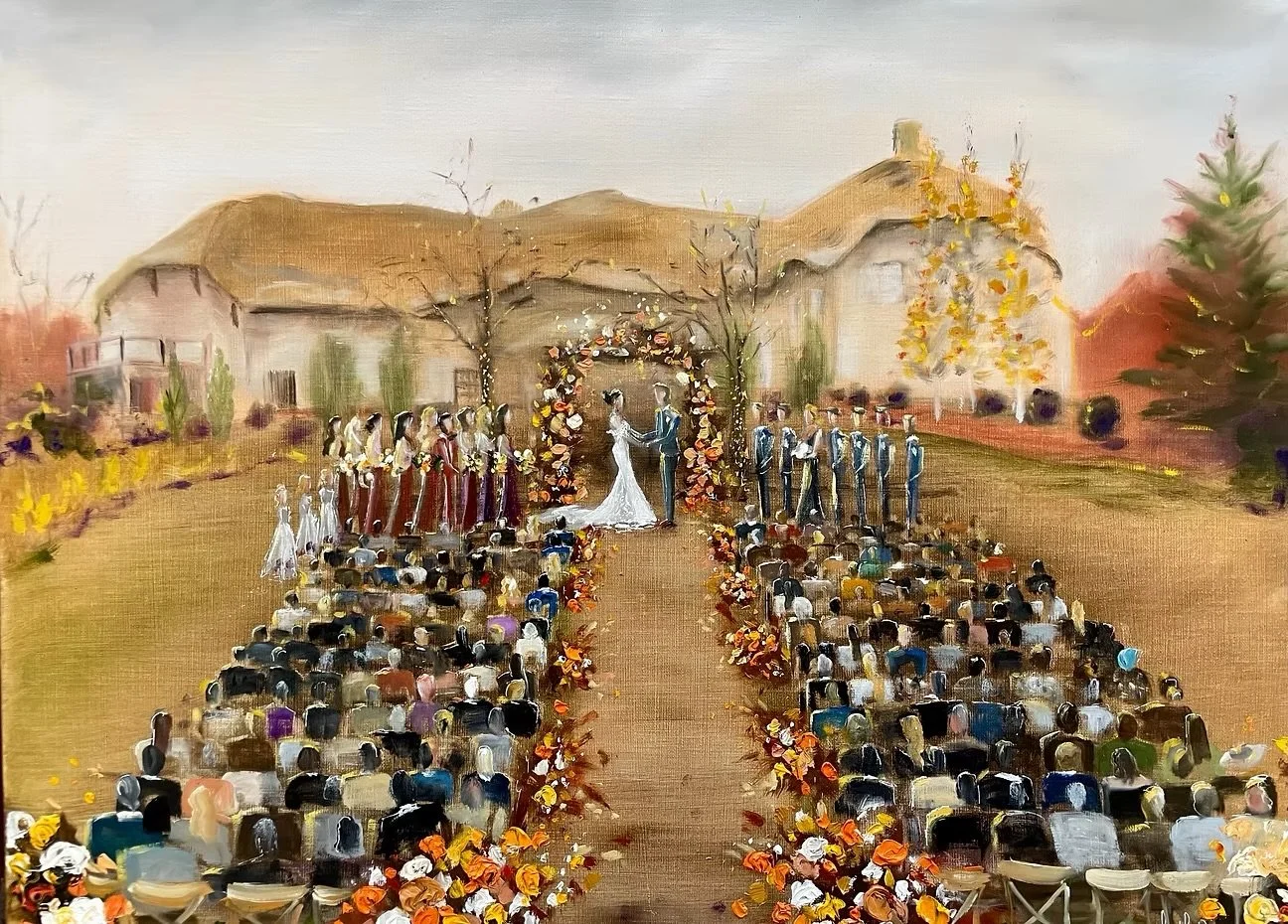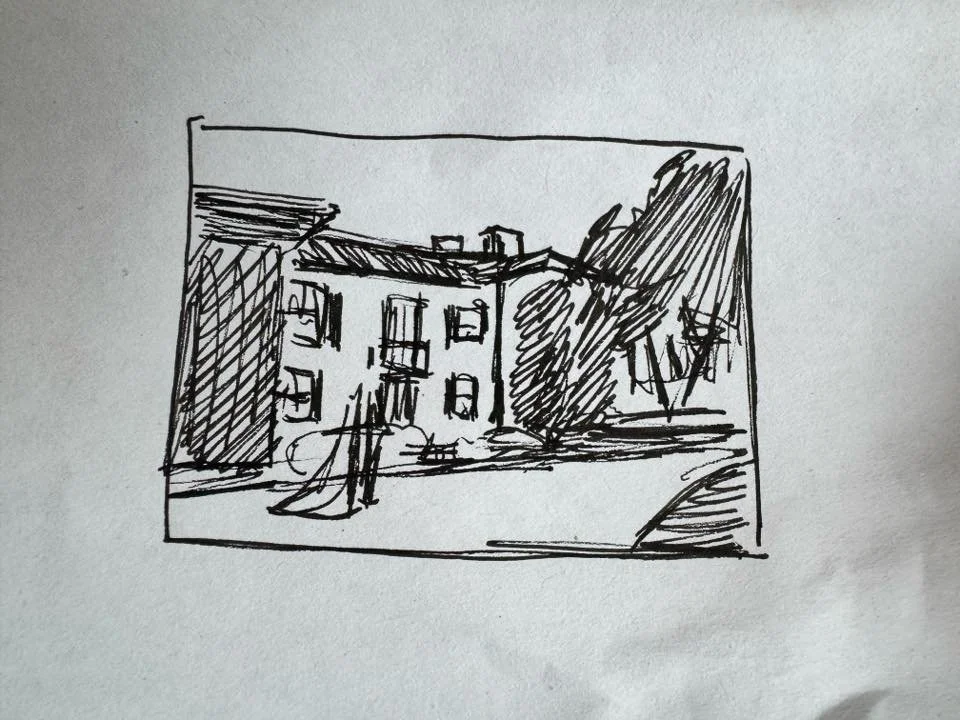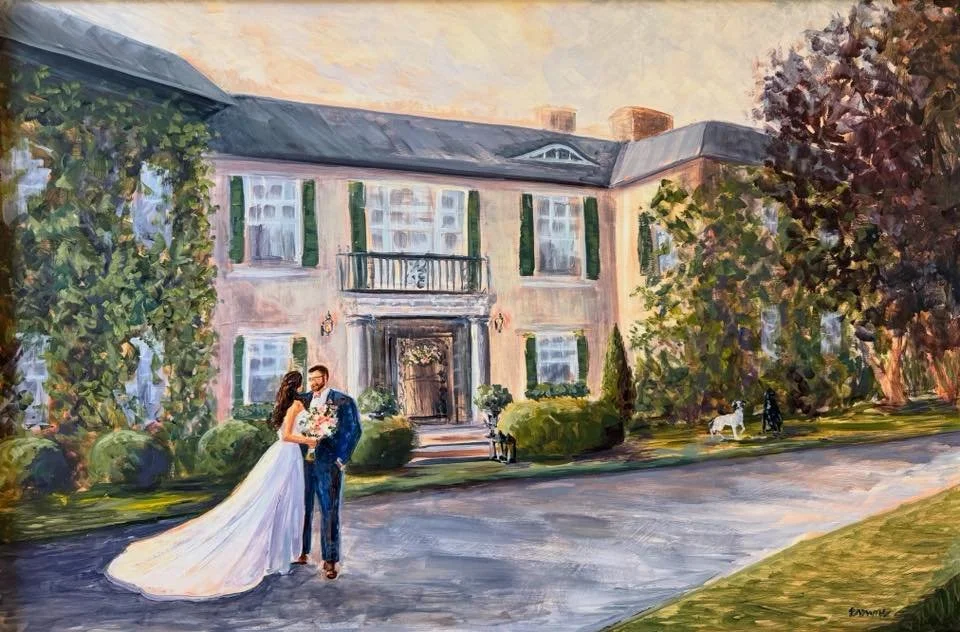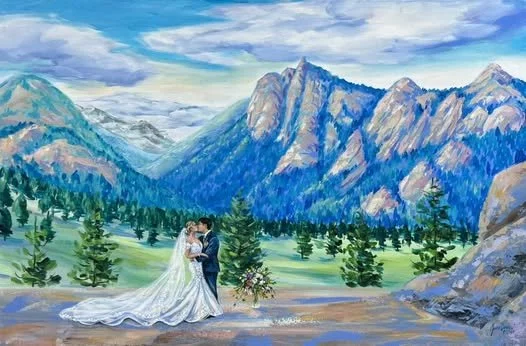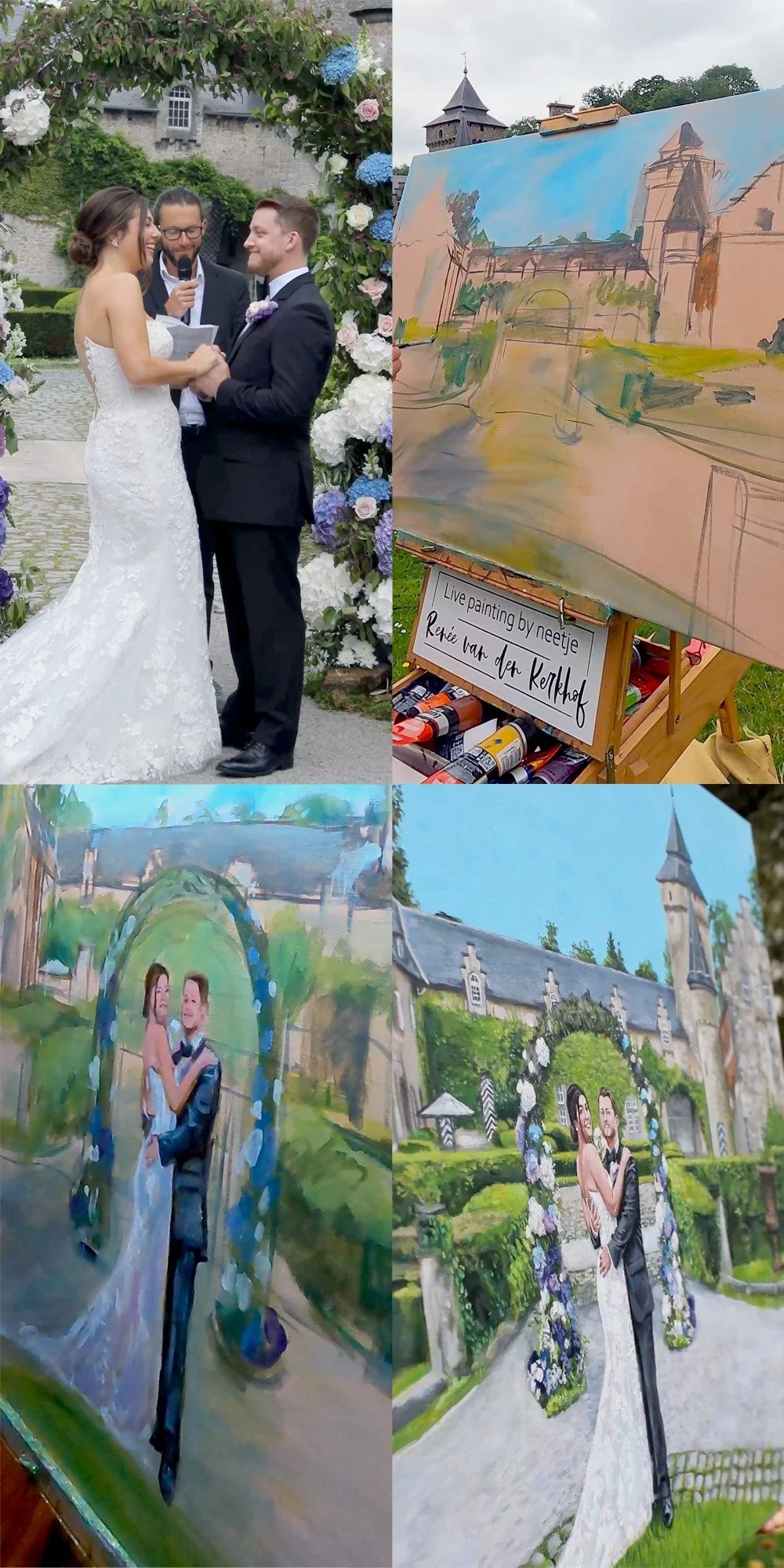There’s more than one way to paint a wedding
When I first learned of live wedding painting, I didn’t know anything about the process. As a traditional artist with a focus on realistic portraiture and figure art, I wondered how someone could paint an event with so many moving parts. Further research led me to discover that most artists do in fact, work from a photo reference while painting at the event. I reached out to my fellow artists to compare the different ways we approach live wedding painting.
My process
From a photo
I start my paintings with a grid to draw my subjects as accurately as possible. Portraiture is a game of milimenters, and setting up a strong foundation is integral for capturing likeness and the essence of expression. I typically work from a photo reference from start to finish and use my strength in portraiture to focus on the newlyweds.
I spend 6-8 hours at weddings, painting with fast drying acrylic so smaller paintings will be finished by the end of the night. Larger works or paintings with complicated backgrounds may require final touchups in the studio. I try to communicate with the wedding photographer ahead of time, to let them know I will need a moment to shoot a reference during the couple’s moment of choice, or to work from a photo they take.
The painting by the end of the night. Painted at the Mitchell Park Domes in Milwaukee, WI, 12”x16” acrylic on canvas.
Photo reference by Dani Dahl Photo
From Life
While most live wedding painters use a photo reference, Leanne Larson is a believer in allowing the mood and energy of the event to play a big role in her work. “I avoid working from photos and allow my time spent engaging with guests -painting them in on the spot - asking where they were sitting and just having a lot of fun. When we are restricted to copying a photo from our phone, it takes away from the entertainment portion. This style is my traditional collection where you get a very loose and post impressionistic style of their setting!”
Leanne Larson is based in central Minnesota and paints on linen canvas.
From a sketch
Bethany Brown focuses on a painterly impression of the moment. She starts out with a thumbnail sketch to plan the composition and some of the values. She paints on site approximately 4-6 hours, plus time needed for sketching, taking photos, etc.— finishing at the event. “I paint from my sketch, and use my photos for reference if needed, especially for the couple.”
Bethany Browne is based in CT, travels to MA & RI, and paints in acrylic on gessobord or canvas, or oil on linen.
… and in the studio
Renée van den Kerkhof based in the Netherlands, offers same day packages and premium packages with in studio touch ups (bottom left and bottom right image respectively). She often often combines two or three photos to create the right composition. Same day packages include up to 7.5 hours of painting on the day (not including setup and meal time). “Most choose premium and some request a custom package with just a few touch-ups. Those are somewhere between additional 20 and 60 hours.”
In oil
Flladi Kulla jokingly calls his approach “making a mess and trying to fix it".
“I basically start sketching with a medium-size brush once I get the desired references at the wedding, doing really basic shapes— simplified forms and masses overall, and then slowly start bringing the bride and groom's figures to life, as much as time allows. it takes another 30+ hours in the studio to complete the painting (or rather 'stop painting"). More than 60% of my time is spent on the background.”
Flladi Kulla based in Connecticut, paints live in oils, on linen canvas.
and more!
These are just a few examples of the different approaches to live wedding painting, including techniques, focus, mediums, and time spent at events. Let me know in the comments if you would like to learn about more artists and the process of painting events live!

